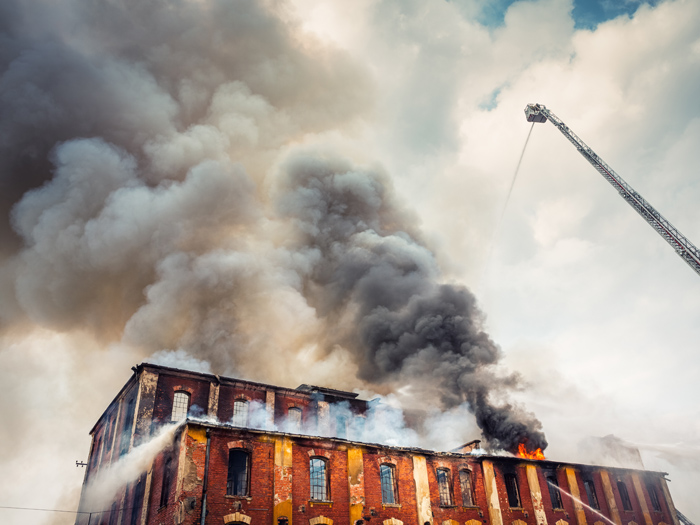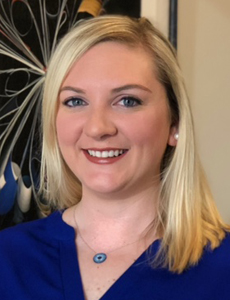The Red Hook Fire Art Loss: A Case Study for Knowing Who Your Insurance Broker Is

Rich in American history and nestled beside the Hudson, Red Hook has attracted a crowd of creatives to its streets for decades.
The buildings in this Brooklyn neighborhood date back to the 1800s, many erected during the Industrial Revolution to accommodate the hustle and bustle of machinery-led production flooding into the country.
As the centuries progressed and warehouses emptied, real estate moguls began to reimagine Red Hook. Brick-laid buildings, exposed beams, gritty and historical interiors — it became a hub for artists, conservators and other creatives looking for affordable space.
“Red Hook is filled with old, industrial warehouses turned into multi-unit commercial spaces for artists,” said Kristina Marcigliano, associate director, fine art, jewelry & specie for WTW.
“Being able to afford a space in Brooklyn, as opposed to the pristine buildings and high prices of Manhattan, and the industrial nature of these buildings, speaks to the artists.”
For decades, many creatives have found a home for their art and specie in these waterfront warehouses, filling studios with their output and contributing vital elements to the artworld canon.
But like with any building, risk lurks in the rafters.
A fire on September 17 in a warehouse that housed artists and held multiple works of art proved that point.
The Brooklyn Blaze
That evening, a warehouse on Van Brunt Street in Red Hook caught fire. The cause is still under investigation, but fire marshals believe that the five-alarm fire ignited on the third floor.
It burned well into the next day, so persistent and destructive that firefighters had to start pumping water from the Hudson to quiet the flames.
Marcigliano, whose passion for fine art extends beyond her professional life, knew what would come next. After the shock and despair, the artists and conservators from dozens of galleries, shops and studios would be tasked with taking stock and trying to recoup their losses.
“This is likely a total loss event,” she said. “It’s still ongoing, so there might be things that are salvageable, but after being on fire and drenched in water from the Hudson, it’s very unlikely.”
She took to social media, knowing her background and knowledge could potentially set some of the fire’s victims on a diligent insurance path.
“I live in the Tri-state area. I watched the news as this was happening,” she said. “I posted on LinkedIn to be a resource, just saying if anybody’s in need of assistance or if you need guidance, a second set of eye on your policy, I’d be happy to offer a professional opinion.”
An industry contact saw the message and reached out. They had a connection to two tenants of the building who were looking at what happened and asking themselves, “What now?”
Baby Steps After Disaster
For the Red Hook artists, Marcigliano spent the time working through the steps to take post incident. Though they weren’t her clients, she didn’t want to see those in the community she serves being taken advantage of.
In the immediate aftermath of the fire, public adjustors were posted outside the building stepping up to guide the victims, often offering services that would already be taking a percentage of the insurance payouts before the full damage had even been assessed.
“This wasn’t some big lawsuit payout they would be receiving. These are claims being paid out to make them whole,” she explained. “The reason I posted on social media was because I didn’t want [the artists] taken advantage of in this vulnerable time of uncertainty.”
It’s a good thing, too, because she recognized these artists and conservators might be underinsured.
“This is a multi-policy trigger event,” said Marcigliano. There’s the more obvious property losses that occurred. But then there’s potential special equipment loss for creatives who worked with sculptures, metals, fabrics, clays and other materials. Commissioned artwork means contracts with clients can now not be fulfilled. Business interruption is another factor, as well as the business contents and business income component.
“These tenants need a broker advocate. It’s a time of high vulnerability and they were just standing outside their building not even knowing what to do.”
Marcigliano told the artists to start taking pictures of the damages. While the building is still closed off to the public due to safety concerns, she said having photographic evidence of the studios from before the blaze will help paint the picture of what was lost.
“Any images of them working in the space, any documents, references or catalogues of the pieces being worked on … contracts made, invoices, maintenance reports … will be beneficial” as the victims put forth their claims, she said.
Know Your Broker
A fire like this is devastating, regardless of industry, and it can happen anywhere. America’s aging infrastructure is no secret, so it’s important for insureds to be vigilant when it comes to protecting their livelihoods.
Some of this protection is the onus of the landlord, like retrofitting old buildings to withstand today’s ever increasing risks.
But insureds can take steps to protect themselves, too, starting with building a relationship with their broker.
“You want to know who your broker is by name. They are getting paid to be an advocate for you. If you don’t know who your broker is, I see that as a red flag,” Marcigliano said.
“If your broker has never come to see your business or has never asked to video walkthrough to tour your business, that’s another red flag. Your broker should know who you are and your business; they can’t build a coverage plan that will protect you if they don’t take the time to know who you are and what you are doing.”
She added this is why good brokers ask what can feel like overly-detailed questions. But in reality, they are painting a full picture of the business so that they can decide the policies that best match the potential risks.
“You should also regularly be speaking to your broker. At the very minimum, it should be once a year, but ideally more often than that,” she added. This is key in understanding how the business is changing from year-to-year. Did the insured acquire new equipment? Have old equipment serviced? For artists specifically, are they working with new materials?
“The broker will want to know what’s going on, what to expect, so they can help.”
Finally, it’s important to find a broker that understands the business.
“The last thing you want to see is someone after a loss realizing they didn’t have a policy or protection in place that could have helped them,” she said. “Specialized brokers get the business. They advocate for their clients, because they understand what they need.” &
Information on how to help the artists, conservators and other businesses affected by the fire can be found here.











